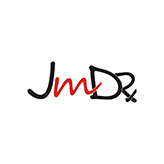

Journal of Multidisciplinary Dental Research
DOI: 10.38138/JMDR/v11i2.25.21
Volume: 11, Issue: 2, Pages: 49–58
Original Article
Abrar Ahmad Hakeem1,∗, Sandeep Kour2
1Senior Resident, Department of Dentistry, Government Medical College, Handwara, Jammu and Kashmir, India
2Professor and Head, Department of Prosthodontics and Crown & Bridge, Government Dental College, Srinagar, Jammu and Kashmir, India
*Corresponding Author
Email: abrar296@gmail.com
Received Date:25 April 2025, Accepted Date:01 September 2025, Published Date:19 November 2025
Dental implants have emerged as a reliable and predictable treatment modality for the rehabilitation of both complete and partial edentulism. They not only restore masticatory efficiency but also improve prosthetic stability and enhance patient satisfaction and quality of life. Despite these advantages, preservation of peri-implant bone remains a critical challenge in implant dentistry. Clinical studies have reported an average marginal bone loss of approximately 1 mm during the first year following implant placement. The present study aims to compare the extent of crestal bone loss associated with implant-supported restorations retained by screw mechanisms versus those retained using cement. A total of 18 implants were placed in 18 participants, with restorations randomly assigned into two groups: 9 screw-retained and 9 cement-retained crowns. In the screw-retained group, the restorations were bonded to titanium bases outside the oral cavity. For the cement-retained group, crowns were cemented onto customized titanium abutments directly within the mouth. All restorations were assessed using modified FDI criteria at baseline (within two weeks of placement), and subsequently at 3, 6, and 12 months. Crestal bone loss was measured using standardized radiographs taken at the same time intervals. There was no notable difference observed between screw-retained and cement-retained implant-supported prostheses. However, dental implants may present complications that can contribute to failure, depending on the type of restoration—whether screw-retained or cement-retained. Therefore, choosing the appropriate treatment should be guided by clinical relevance and the specific condition of the tooth. Within the limitations of this study, no statistically significant difference was observed in crestal bone loss between screw-retained and cement-retained implant-supported prostheses.
Keywords: Dental implant, Screw retained prosthesis, Cement retained prosthesis
© 2025 Published by International Dental Educationists’ Association (IDEA). This is an open-access article under the CC BY license (https://creativecommons.org/licenses/by/4.0/)
Abrar Ahmad Hakeem, Sandeep Kour. In Vivo Evaluation of Crestal Bone Loss in Placement of a Screw Vs Cement Retained Single-Tooth Posterior Dental Implant Prosthesis. J Multi Dent Res. 2025;11(2):49–58. https://doi.org/10.38138/JMDR/v11i2.25.21
Subscribe now for latest articles, news.

